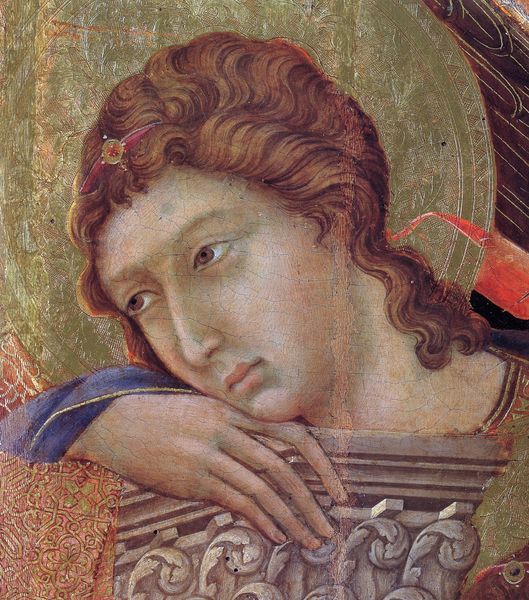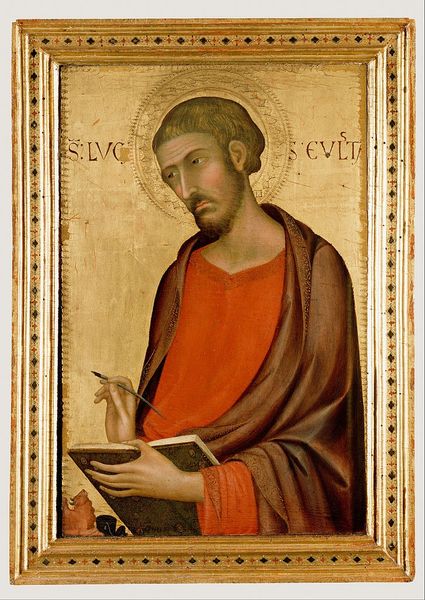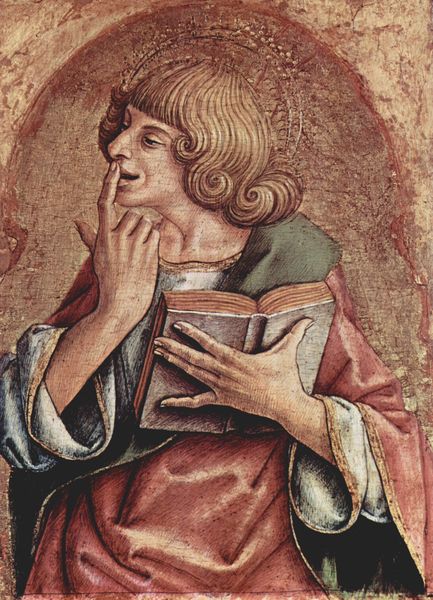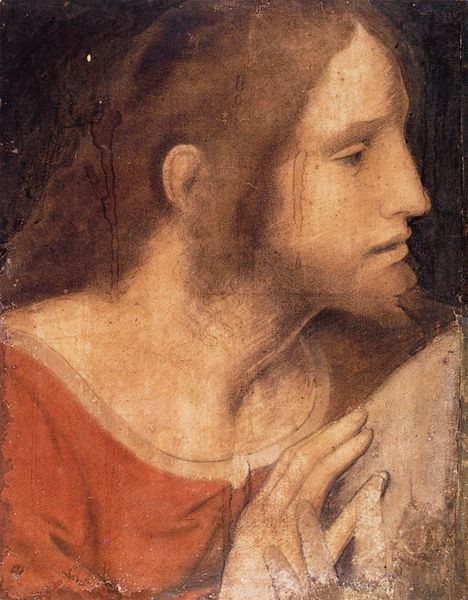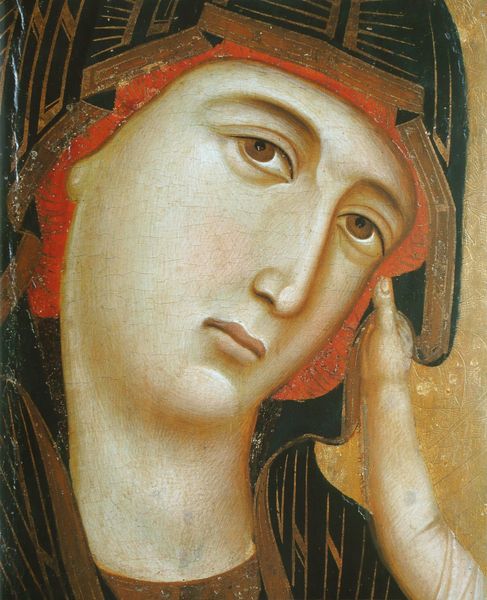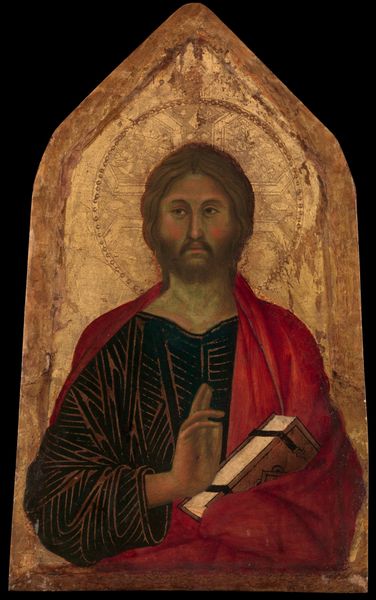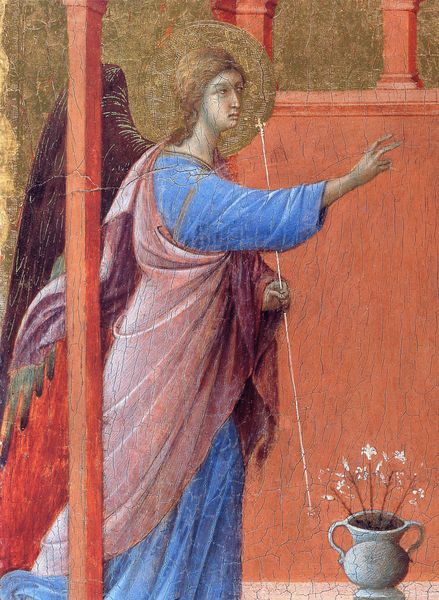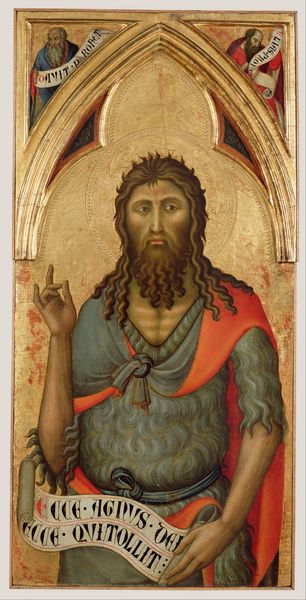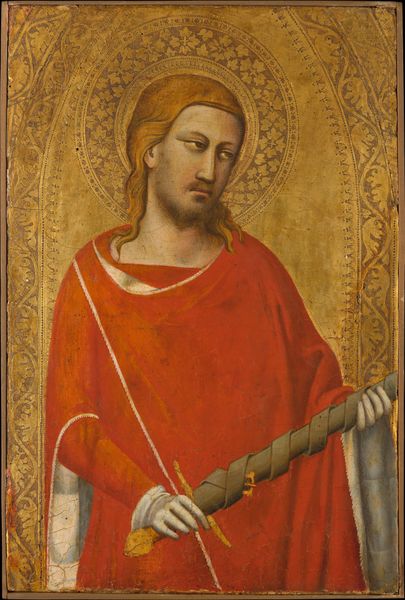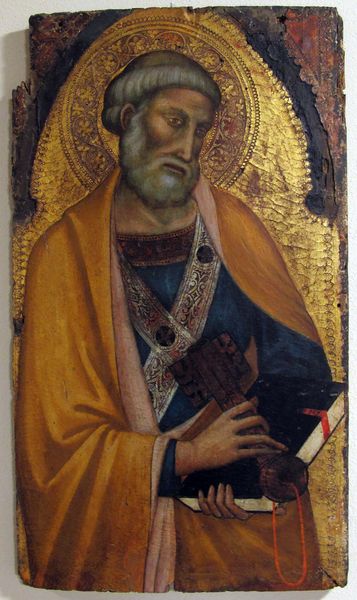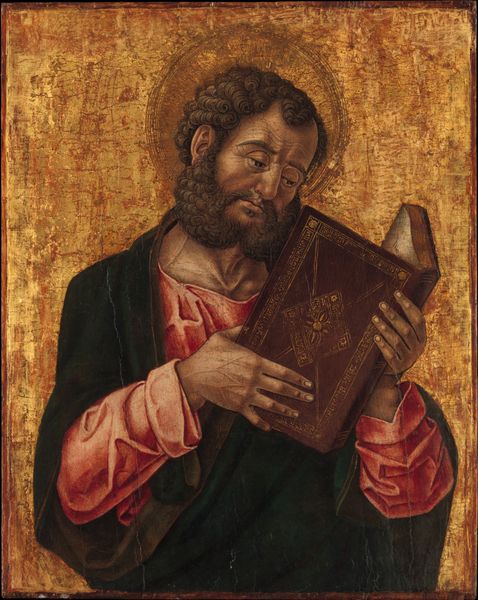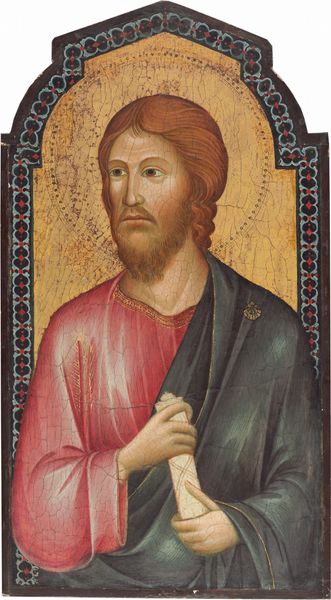
panel, tempera, painting
#
portrait
#
medieval
#
panel
#
narrative-art
#
tempera
#
painting
#
figuration
#
history-painting
#
italian-renaissance
Dimensions: 54.3 x 43.1 x 1.8 cm
Copyright: Public Domain
Editor: This tempera on panel, "St John the Evangelist Mourning," attributed to Deodato Orlandi around 1300, just pulls at your heartstrings. There's so much sorrow etched on his face. What kind of a world fostered that sort of profound public grief, do you think? Curator: That’s a powerful response. The early 14th century was a period of tremendous upheaval. Think of it in terms of socio-political conditions. The rise of powerful city-states, constant warfare, and of course, the ever-present shadow of religious doctrine heavily influenced artistic patronage. Paintings like this served less as individual expressions, and more as public symbols that articulated specific communal and individual roles and emotional needs. The placement of this image in a church is crucial to remember. Does that shift your thinking at all? Editor: Definitely. Knowing where it was intended to be viewed gives it more significance. Was there anything unique about its commission, the patron, or how it fits in with the prevailing artistic styles of the time? Curator: Precisely. These commissions frequently involved complex negotiations between the patron, religious figures, and the artist, and even workshops. This reflects how powerful institutions, primarily the church, shaped the visual language of the era. Orlandi likely didn’t have free rein over subject, composition or even the emotional tenor depicted. Editor: So, instead of pure artistic expression, it was crafted to fill a social role, helping people process these widespread, societal issues, and perhaps find some common ground within faith. Curator: Exactly. The public function of the art in those spaces becomes paramount in understanding the art itself. These were less private, aesthetic responses than they were performative moments in society and communal visual cues about how to properly grieve in a socially-appropriate way. Editor: I never thought of it that way before – seeing art less as personal creation and more as a kind of social tool. It definitely gives this painting, and maybe even the whole era, a fresh layer of meaning for me. Thanks.
Comments
stadelmuseum about 2 years ago
⋮
This depiction, which looks like a painting in its own right, is only a fragment of a panel cross. The laterally widened stem showed the crucified Christ, while vertical rectangular picture fields at the ends of the crosspiece featured half-length figures of the Virgin and St John. Painted crosses of this kind hung above the rood screen or at the entrance to the choir in large churches. Deodato Orlandi may have painted this one (which, at originally about 5.30 metres, was unusually tall) for San Piero a Grado, near Pisa, for which he also executed an extensive cycle of frescos.
Join the conversation
Join millions of artists and users on Artera today and experience the ultimate creative platform.
